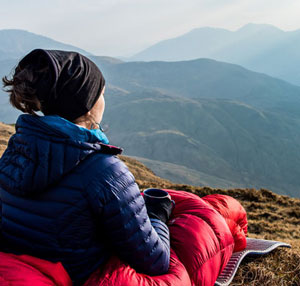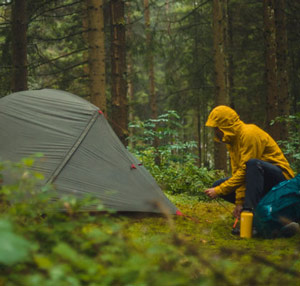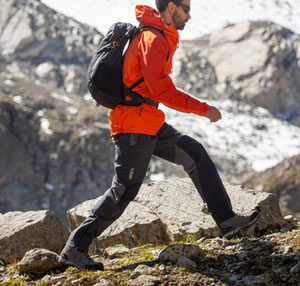Breaking Point: Tackling Europe's Hardest Trek - GR20
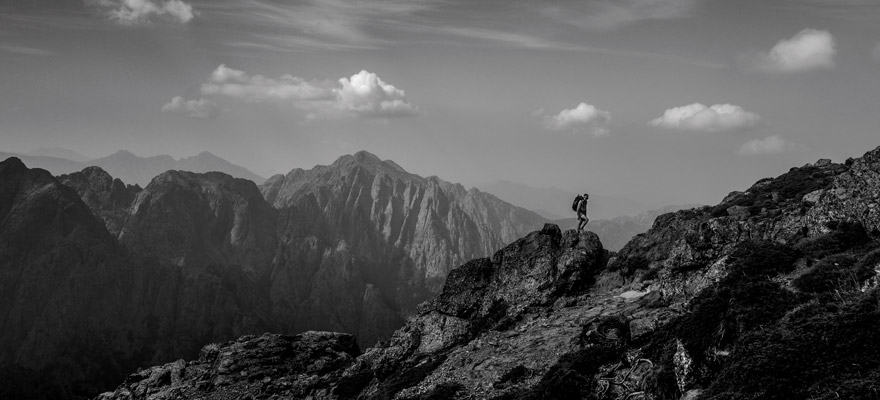
By Matt Westby
Running over the top of the arid, rocky peaks of Corsica, the GR20 is Europe’s toughest long-distance trail. But as Matt Westby found out, the island landscapes more than make up for the difficulty.
Throwing my pack down, I sink gratefully to the ground outside the refuge, soaking up the last of the afternoon sun. All of the seats are taken by fellow hikers, but a bare patch of wall to rest against is plenty comfortable enough for my beleaguered body. I pull my phone from my pocket and send a text message to my Dad. “Ridiculously tough trek. Terrain is brutal. Two days in and I’m already broken.”
In fairness, I had been warned this would be the case by the various guidebooks, websites and blogs I read over the past few weeks. Corsica has a reputation as being a rough, uncompromising place, full of rough, uncompromising people. The island’s most famous son is, of course, Napoleon Bonaparte. It’s perhaps not surprising then that the island is home to the toughest of France’s Grandes Randonées, or ‘GR’ Routes, the GR20. But while I’d read a couple of things suggesting that this was ‘the hardest trek in Europe,’ I’d dismissed it. Surely it couldn’t be that bad.
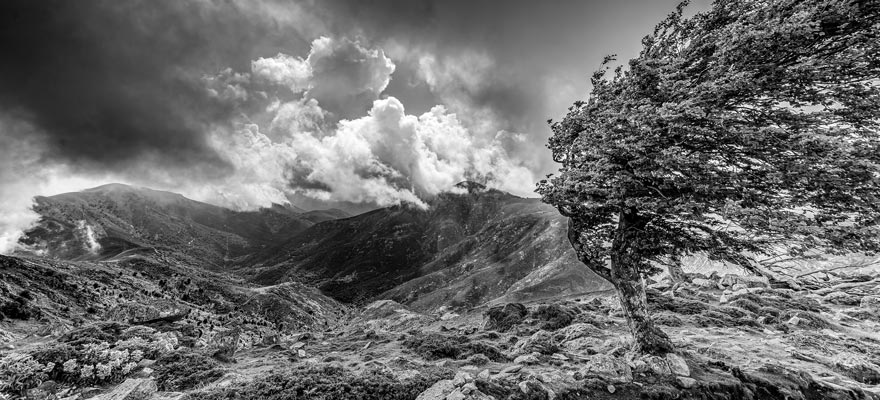
Today I was proved wrong. Emphatically. Almost immediately after setting off at 7am, we were clambering over 40-degree slabs of granite, scrambling up boulder fields masquerading as paths, traversing exposed ridges and descending scree slopes that may as well have been made out of marbles. Twice we took on enormous climbs up to wind-battered passes and twice we had to stumble all the way back down to the next valley along, our thighs, calves, knees and pretty much every other part of our anatomies already screaming in submission.
The views were magnificent – cathedrals of rock towering over deep pine valleys – but the trail to get to them was quite simply the worst I’ve ever set foot on. Now, sipping the dregs from my water bottle outside the Asco Stagnu refuge after more than 10 hours of toil, I’m beginning to wonder if this beast of a hike would have been best left alone. The only consolation is I’m not the first to feel this way, and definitely won’t be the last.
Thousands of walkers take on the GR20 each summer, navigating all or part of the 180km between Calenzana, in the north-west of Corsica, and Conca, in the south-east. Those with any sense can do just the northern or southern half over a week and call it quits at a village in the middle of the island called Vizzavona, where a train is waiting to take them back down to the coast. But for those, like me, deluded enough to try the whole thing, an average of 14 or 15 days walking, with 12,500 vertical metres of climbing awaits. There are refuges at regular intervals along the way, offering cramped beds for the night and unnecessarily expensive meals, but places get booked up months in advance and many instead opt to pack a tent and camp outside the refuges - the only flat ground anywhere on the route. For many, this means lugging a stove and countless kilograms of pasta, carrying up to 90 litres on their backs.
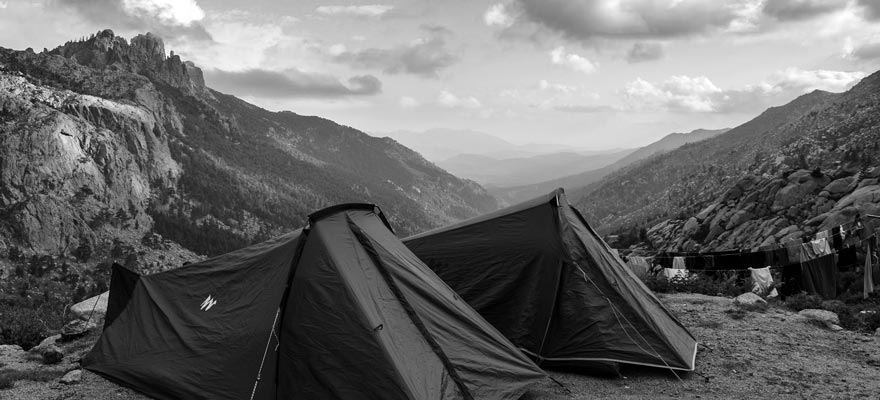
Pressed for time, my friend and I are attempting to complete it in a far more ambitious 10 days, with an 11th added on to climb Corsica’s highest mountain, Monte Cinto. The only way to make this feasible is to travel light, packing only the absolute essentials, and eating in the refuges. The smell generated by just two T-shirts, a fleece, a rain jacket, a down jacket, one pair of shorts, one pair of trousers and three pairs of walking socks will no doubt endanger public health when I stride into Conca, but on account of how many struggling people we have overtaken so far, it appears camping light is been a shrewd decision. Yet rushing also has it cons. The GR20 is made up of 16 ‘stages’ varying from two and a half hours to seven, and while almost everyone ‘doubles up’ on one or two, we’re doubling up on no fewer than six stages - four of which our guidebook predicts will be 10-hour-plus slogs.
A PEAK TOO FAR?
Today has been the first of those epic walking days and even though the dust is still settling on both my boots and my thoughts, I’m already regarding this as one of my hardest days of walking ever. We stump up for dinner in the refuge and with my wallet significantly lightened, I’m asleep as soon my head hits the pillow. But we’re up again early the following morning for our attempt on the 2,706m Monte Cinto. It’s not on the route of the trek but my semi-masochistic friend thought it would be a good idea and, in the name of naivety and bagging a peak, I didn’t argue.
I’m soon regretting it. The boulder-covered trail to the top is somehow even more broken than the GR20 and our progress is consequently so slow that after four hours of lung-busting, quad-crunching slog, we’re still only at a small plateau well below the summit. We stop for a drink, snacks and photos of the chaotic, yet idyllic, valley up which we’ve just climbed. But as we do so, the wind whips up and dark clouds suddenly muster over the mountain’s craggy pinnacle.
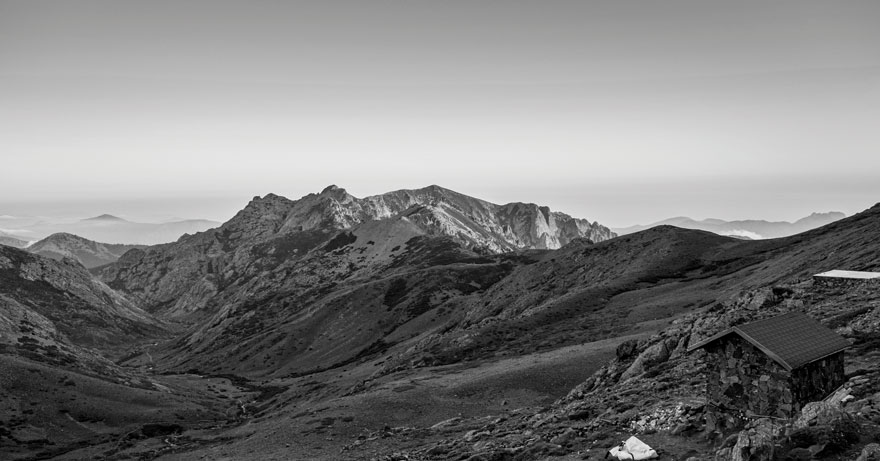
The temptation to press on regardless is hard to resist, but recent events have made us all too aware of how dangerous these peaks can be in bad weather. Just a few days earlier, seven hikers had been tackling the most difficult section of the whole GR20, the notorious rock walls of the Cirque de la Solitude – not too far from where we are now – when heavy rain caused a landslide and washed them away to their deaths. Several others were hospitalised, but survived.
With the tragedy fresh in mind, the weather worsening and time getting away from us, we decide to wave a white flag at Monte Cinto and turn back, taking solace in the fact we don’t have to rush the descent and can at least enjoy the humbling beauty of this part of the range. We are due to tackle the Cirque the next morning – our third day on the GR20 proper – but it’s still closed and so instead we head to a road adjacent to the refuge to catch a bus around it, rejoining the route in the next valley along. Within a couple of hours of picking back up the red-and-white daubs of paint that mark all 180km of the GR20, it resumes its quest to snap our bodies and sap our morale by hitting us with the nightmarishly steep scramble up to the 1,962m Bocca Foggiale. The ascent is so vertical in places that you use your hands as much as your feet. By the time I finally stumble my way to the top 90 minutes or so later, my fingertips are raw and my shoulders feel like I’ve rowed the Atlantic.
Thankfully, the end of the stage is waiting not too far away at the Refuge de Ciottulu di i Mori. It sits at the throat of an expansive grassy valley, overlooking neighbouring peaks and, in the far distance, the Mediterranean.
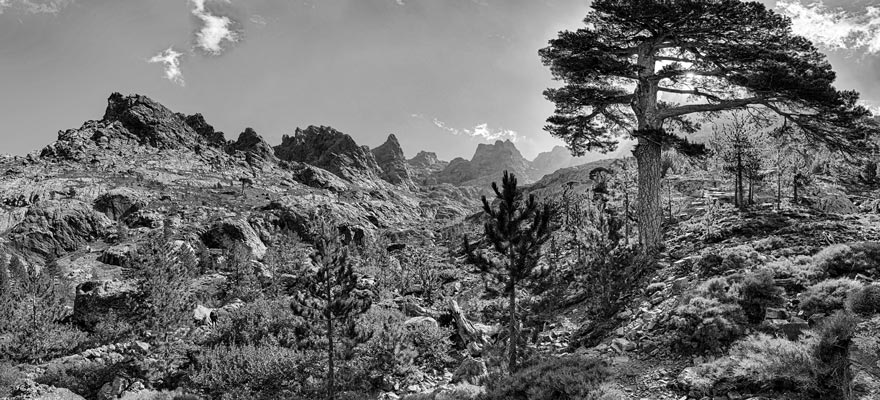
While refuges in the Alps are wonderfully atmospheric places that can be as much a highlight of the holiday as the walking itself, here on Corsica they are more basic. From the outside Mori’s stone facade gives it a quaint appearance, but on the inside it’s bare and basic; not an ice axe hanging from the wall or a black-and-white photo of triumphant 1930s mountaineers to be seen.
And space is at just as much a premium as nostalgia. During the busy summer months it’s a scrap to claim a seat in the dining room, and the food isn’t much better. Three-course meals are available for 20 euros, but the guardians who prepare them aren’t exactly Michelin-starred chefs. Put it this way; you’re not likely to be asking for the recipe afterwards.
But then there’s a certain rugged charm about the whole experience too, and anyway, you’re usually so tired and hungry by the time you reach a refuge that even a rollmat on the hard stone ground outside and a bowl of salty lentil soup feels five star.
Over the next few days, the GR20 pushes us into what becomes a rhythm. Wake before dawn; eat a badly crushed cereal bar I brought from home for breakfast; start walking at first light; climb up an enormous hill; take photos of fabulous vistas at the top; try not to break an ankle on the descent; then repeat, usually several times, before staggering gratefully into the next campsite, alongside the next refuge.
Race to the finish
The seventh day is supposed to be only four hours long, but with my friend’s penchant for punishment not satisfied, he decides we should go off-piste once more to tackle the 2,622m Monte Rotondo. Yet again I don’t protest, only this time I’m glad, because while the trail is hard to follow, the climb is a joy.
The highlight comes 200 vertical metres from the top, when a picture-perfect lake known as Lavu Bellebone appears, with the summit ridge just behind like a castle wall. We had no idea it was there, and so it feels as if we’ve stumbled upon an undiscovered wonder of the world.
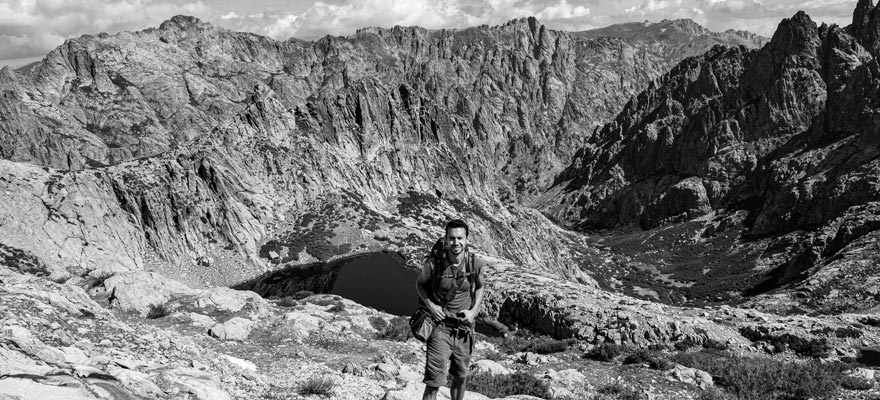
The 360-degree views from the top prove just as spellbinding and, given that no one else has chosen to make the ascent today, they’re ours to enjoy alone. For the remainder of the day and all of the next, we make our way back down to the GR20 and then along to the halfway point of the trek. Arriving in Vizzavona, we gorge ourselves on pizza, beers and soft drinks. We need the calories, because our relentless schedule means we must knock off the remaining six stages and 92km in just three days - each lasting at least 11 hours.
We take hope from the fact the GR20 supposedly flattens out slightly in the less mountainous southern half of Corsica. But we quickly find that although we’re no longer crawling up and down colossal peaks, it’s still far from a Sunday stroll. The going remains tough. Our penultimate day lifts us steeply back up onto a long, serrated ridge and our pace drops again, but unbroken views of the southern part of the island and the distant Mediterranean are ample compensation.
By the final day my feet are in turmoil – desperate for a pair of flip-flops and the sanctuary of a sandy beach – but the spectacular scenery helps take my mind off the pain. First we see the snaggle-tooth peaks of the Bavella Needles and then begin to spot the red rock of the island’s southern range, which finishes off the GR20 with a flourish.
When we finally limp into Conca, punch-drunk and stinking like farm animals, it’s perhaps fitting that there is no finish line, and no obvious point to take a ‘victory’ photo. You don’t conquer the GR20. Rather you experience its many challenges and treasures and hope to get to the end.
Hardest trek in Europe? It gets my vote.
Trip Notes
Getting there
Several airlines fly direct from the UK to Corsica, including British Airways and Ryanair. Alternatively, if you want to keep your carbon footprint low, you can get from London to Nice by train with a single change in Paris, and catch a ferry to Corsica.
Where to stay
Either book early to get in the refuges, or camp outside them for the full experience.
Guiding
The GR20 is well sign-posted, but a guidebook like the Cicerone Press guide is recommended.

